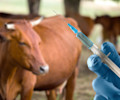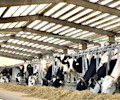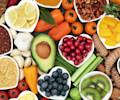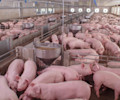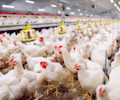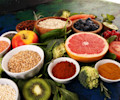It was a poignant moment for the world in 2019 when photographs emerged of fire blazing across the Amazon. As flames engulfed swathes of tropical forest, we were confronted with the possibility of losing our planet’s most biologically diverse ecosystem. Unsurprisingly, the health of our planet is largely dependent on Latin America; hence, the region requires concerted conservation efforts to ensure its survival. Paradoxically, however, the global appetite for meat also depends on Latin America, which is the world’s largest beef-producing continent.
According to the United Nations Environment Programme (UNEP), more than 60% of terrestrial, freshwater and marine species are found in this region. To further illustrate that point, the subregion of the Tropical Andes, which covers less than 1% of our earth’s surface, is home to 15% of all plant species and is considered the world’s most critically endangered biodiversity ‘hotspot’. Not only is the Amazon the largest remaining tropical rainforest on the planet, but it is also home to 24 million people in Brazil alone. With agriculture recognised as the top source of worldwide deforestation and cattle ranching, responsible for almost 80% of the deforestation in the Amazon, the stakes in Latin America are at an all-time high.
The risks and opportunities for protein producers in the region
With large-scale habitat conversion and the subsequent loss of biodiversity advancing rapidly through Latin America, we are seeing increasing media, consumer and shareholder pressure for protein producers in the region to improve on their disclosure and management of ESG issues, especially GHG emissions, deforestation and pollution.
The Coller FAIRR Protein Producer Index, which assesses 60 of the world’s largest publicly listed meat, fish and dairy producers, including nine firms headquartered in Brazil, Chile, Mexico and Colombia, exemplifies this lack of disclosure. In the latest iteration, published in December 2021, FAIRR analyses some of the key ESG risks, opportunities and trends specific to Latin America. It is the second best-performing region after Europe and performs above average on most ESG risks. Encouragingly, we are also seeing year-on-year improvements on risk factors, such as Antibiotics and GHG Emissions. Still, it is worrying to see that company disclosure remains sub-par, especially for the two Index companies based in Mexico (Grupo Bafar and Grupo Bachoco), both of which are classified as ‘High Risk’ and fall in the bottom 20% of global protein producers.
Deforestation & Biodiversity
Protein producers in Latin America (particularly beef producers) have been facing more public scrutiny than companies in any other region over links to deforestation and biodiversity loss. It is encouraging to see that KPI scores have improved under the Deforestation & Biodiversity risk factor where the overall score has risen by more than 14%. In the last reporting year, beef producers also disclosed more information regarding commitments to end deforestation and how supplier compliance on deforestation related-risks is monitored.
Despite some companies making commitments to limit deforestation and advance supply-chain traceability, full traceability has not yet been achieved due to the highly fragmented nature of the cattle supply chain. A good example of this can be seen with JBS, which has set a zero-deforestation target for the entire value chain by 2030. At present, the company´s supply chain is among the biggest drivers of Amazon deforestation. While JBS has strengthened its deforestation-related targets and monitoring efforts, the company has also increased the number of direct suppliers and slaughterhouses in the Amazon, which raises the risk of indirectly buying cattle from ranches that have participated in land clearing. This example also shows the discrepancies between company commitments and actions on the ground.
Investor pressure on this issue has been mounting, and consumer-facing companies are now demanding greater assurances of these commitments. Latin American protein producers must, therefore, adapt quickly to avoid full-blown scandals and ensure continued access to capital.
Waste and Pollution
Latin America scores poorly on KPIs related to Waste & Pollution, which evaluates company performance on pollution in processing facilities, as well as nutrient management in feed and animal farming. The results are particularly worrisome for such a biodiversity-rich region. Land and water pollution, for example, could have a substantial impact on areas where threatened species exist, yet only one company provides metrics on wastewater discharge and pollution. The absence of such a policy is cause for concern since improper waste management can lead to high levels of nitrogen and phosphorus in the environment. In excess, these nutrients provoke disastrous imbalances in marine ecosystems as they stimulate extreme levels of algal growth, which depletes oxygen levels in the water and renders the habitat unusable, forcing species to move to other areas to survive.
Over the past few decades, the volume of Sargassum floating algae along the Caribbean coastlines has been increasing and it is having a devastating impact on several marine species in the region. Part of this algae comes through the Gulf Stream in the Gulf of Mexico, where pollution from farms along the Mississippi watershed has created a dead zone similar in size to the state of Massachusetts.
Communities living near intensive farms and fields are exposed to a myriad of health risks and can experience severe health problems due to manure-related pollution. No Index company in LATAM, however, provides evidence of a community engagement plan to discuss the impacts of their operations on residents living next to their animal farming facilities.
Alternative Proteins
On a positive note, the Index highlights a surge in investment in the ‘alternative protein’ space, with four companies now having a stake in the alternative proteins market. Three Brazilian meat giants, JBS, BRF and Marfrig, along with Minerva and Grupo Nutresa from Colombia, have all announced investments or new product launches in the alternative protein space in 2022. A notable announcement was JBS acquisition of Dutch plant-based meat-maker Vivera and Spanish cultured meat company BioTech Foods in a deals of $400 million and $100 million respectively. As Latin American companies expand into more sustainable proteins, they have a unique opportunity not only to respond to consumer trends but also to diversify their business away from an over-reliance on cattle.
What’s Next for Meat Production in LATAM?
Advancing disclosure
Although LATAM companies have provided greater disclosure across the different risk factors year over year, there are still key risks where reporting remains poor. This is especially true for Water Use & Scarcity and Waste & Pollution. With animal agriculture companies being key water consumers and polluters, investors with assets in these companies can play a significant role in protecting and preserving the value of water. Investors should urge companies in this region to disclose how they are managing water-related risks, carrying out water risk assessments (from a scarcity and quality perspective), and engaging with feed and animal suppliers to manage nutrient pollution.
Increasing traceability
Companies in LATAM that have set ambitious targets to end cattle-related deforestation for both direct and indirect suppliers by extending their traceability systems to indirect suppliers are now expected to disclose progress. As exemplified by JBS, a lack of traceability for the whole supply chain will bring into question the validity of any commitments to source cattle sustainably.
Supporting community through a just transition approach
Food companies in LATAM must move away from intensive and highly polluting practices towards a model that engages more with small-holder farmers, supports inclusivity in the local communities and promotes regenerative agriculture practices. Governments and investors can influence such a transition to safeguard biodiversity and address inequalities in the region. The future in LATAM should focus on less and higher quality meat, limiting monocropping (i.e., soy for cattle feed) and exploring the opportunities for the region to expand the markets of protein-rich crops endemic to the region such as beans, quinoa, tree nuts and amaranth.
FAIRR insights are written by FAIRR team members and occasionally co-authored with guest contributors. The authors write in their individual capacity and do not necessarily represent the FAIRR view.

